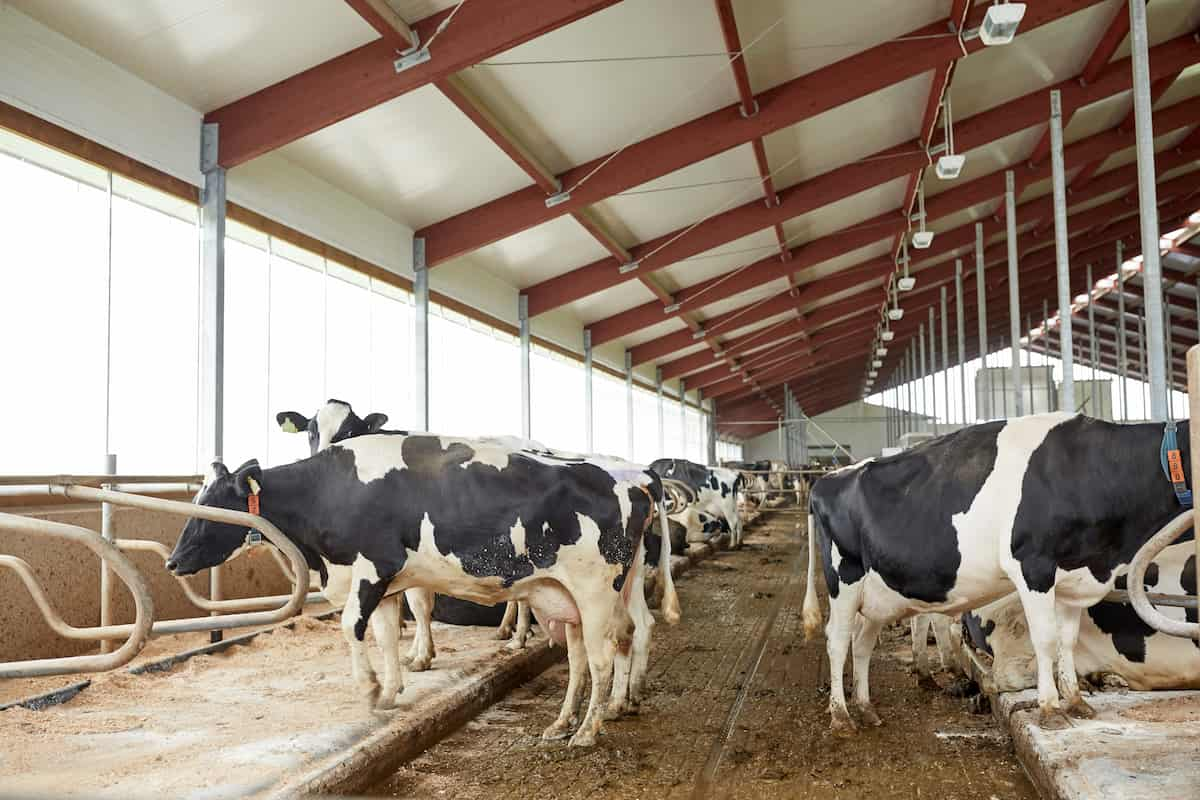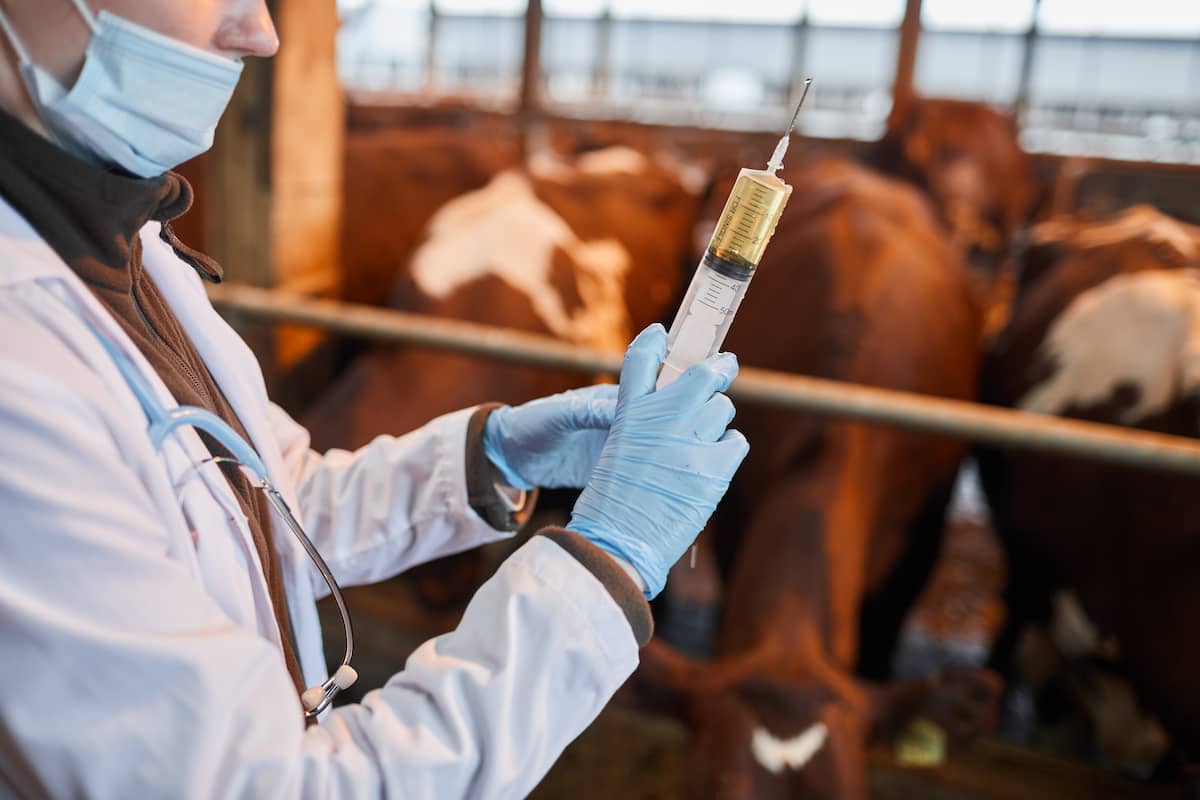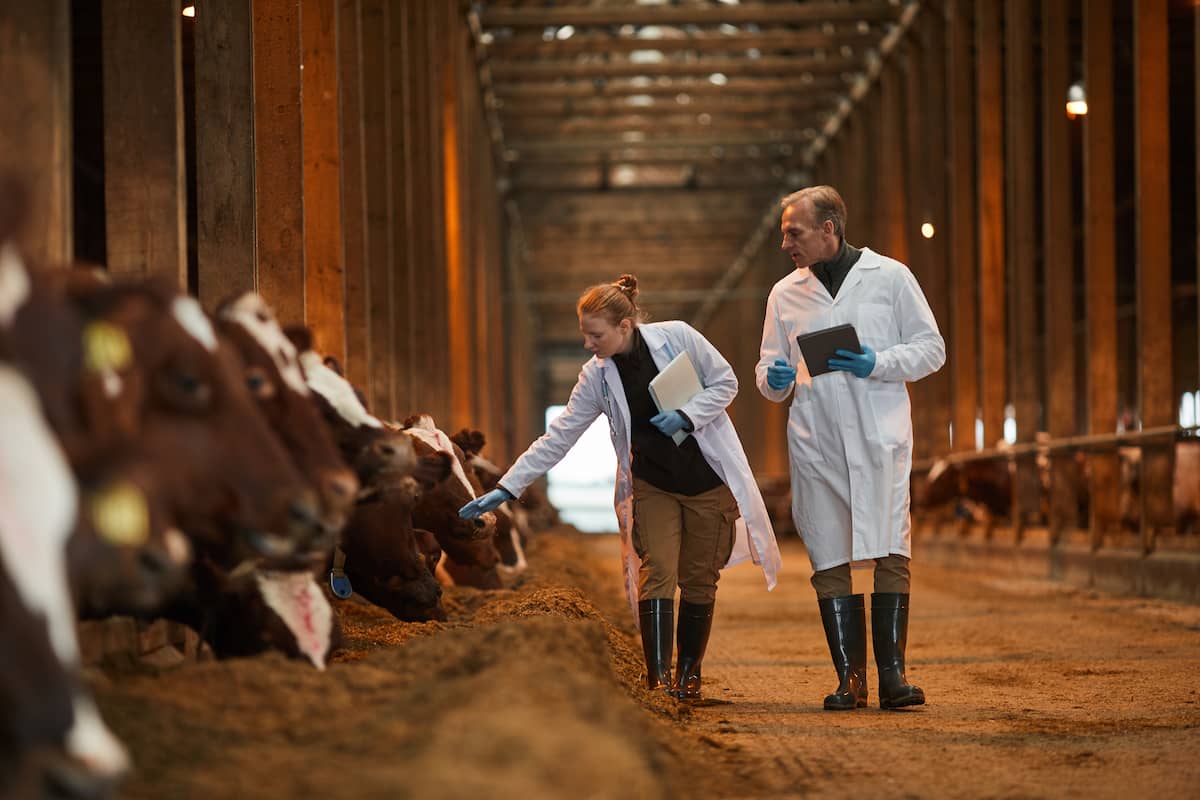Abortion, or the early termination of a pregnancy, is a serious problem in the cattle business due to its detrimental impact on reproductive efficiency and productivity. Infectious agents, dietary deficits, and environmental stresses can contribute to it. The underlying reason for abortion must be identified to treat and prevent the condition effectively.

Proper diet, immunization, and biosecurity measures are the management options for regulating and avoiding abortion in cattle. Early identification and timely management are critical for limiting the economic losses associated with cow abortion.
Abortion Management in Cattle
Causes of Abortion in Cattle
- Abortion in cattle can be caused by infectious conditions such as BVD, IBRT, Leptospirosis, Brucellosis, and others.
- Severe trauma, torsion of the uterus, twinning, and toxins can also cause abortion in cows.
- Coumarins from rat poison and moldy sweet clover, nitrates, chlorinated naphthalenes, and arsenics are examples of toxins that can cause abortion.
- Some plants, such as locoweeds, perennial broom weeds, and pine needles, may also lead to abortion in cattle.
- Estrogenic compounds, douching and infusion, artificial insemination of pregnant animals, and vitamin A, iodine, and selenium deficiencies can also cause abortion in cows.
Disease Cycle of Abortion in Cattle
The reason determines the cow abortion disease cycle. Infectious diseases start with pathogen exposure, which might come from other affected animals, contaminated feed or water, insects, or other vectors. The infection may increase and harm the cow’s reproductive system and fetus after entering. Damage can cause inflammation and abortion or stillbirth.
The pathogen may cause persistent infections in cows, causing repeated abortions or other health issues. Aborted cows may shed the virus, increasing herd transmission risk. Trauma, poisons, and dietary deficits may cause cow abortions with distinct illness cycles. Toxic substances can immediately injure the fetus or reproductive system. At the same time, dietary shortages can impair fetal growth and increase abortion risk.
What are the Symptoms of Abortion in Cattle?
The symptoms of abortion in cattle may include protrusion of fetal membranes or water bags from the vulva before the calving date, discharges from the vulva, and spontaneous expulsion of a dead or underdeveloped fetus. Other clinical symptoms can include:
- Anorexia.
- A dull and depressed condition of the animal.
- Signs of pain or discomfort.
Early detection of these symptoms is crucial to prevent the spreading of infectious conditions and ensure proper care for affected animals.
Diagnosis of Abortion in Cattle
Abortion in cattle is diagnosed by a comprehensive assessment of the animal and its surroundings and scientific tests. A veterinarian often performs a physical examination to examine the animal’s overall health and identify any clinical signs, such as discharges or fetal membrane protrusion.
Laboratory laboratories may use bacterial cultures, PCR, and serological testing to identify infectious disorders such as BVD or IBR. Remaining procedures, including necropsy and histology, can assist in determining the reasonableness of the abortion and identifying any possible hazards to the herd’s other animals.
Treatment and Control of Abortion Disease
- Early diagnosis and treatment of infectious diseases.
- Isolation of affected animals to prevent the spread of disease.
- Follow proper biosecurity measures to avoid disease transmission.
- Proper cleaning and disinfection of animal sheds.
- Regular vaccination and testing of animals to prevent outbreaks.
- Implementing a herd health program with the help of a veterinarian.
- Monitoring the health and behavior of animals closely for any signs of illness.
In case you missed it: Black quarter Disease Management in Cattle: Symptoms, Treatment, and Prevention

Preventive and Abortion Management in Cattle
- Proper disposal of the aborted fetus and its membranes.
- Prevention of ingestion of infected materials such as uterine discharges and fetal membranes.
- Maintain a clean animal shed.
- Vaccinate heifers against IBR-IPV at 6-8 months of age, but pregnant cows should not be vaccinated.
- Avoid feeding poor-quality silage with high pH to prevent listeriosis.
- Vaccinate calves from 3 to 7 months of age with strain 19 Brucella vaccine to prevent brucellosis.
- Stop breeding during a disease outbreak and limit contact between animals.
- Do not use diseased bulls for breeding.
- Use semen free from any infectious agents for artificial insemination.
- Protect pregnant animals from attacks.
- Ensure the pregnant animal shed is not slippery.
Ideal Management Practices for Abortion in Cattle
- Proper nutrition: Cattle health and production depend on a balanced diet. It prevents abortion-causing defects.
- Documentation: Accurate records of cow breeding, vaccines, and medical treatments may assist farmers in recognizing health issues and managing their herds.
- Regular herd health checks: Veterinarians can spot health concerns before they become serious. It can prevent illness and abortion.
- Proper animal handling reduces stress and injury, which can lead to abortion.
- Comfortable and hygienic homes and shelters decrease stress and disease spread.
- Breeding management: Using healthy bulls and monitoring pregnancy rates can help cows deliver healthy calves and lower abortion rates.
Impact of Abortion on Cattle
Abortion can have a considerable influence on the cow population. A miscarriage can result in the loss of valuable genetics, decreased milk output, and diminished fertility in the afflicted cows. Furthermore, an epidemic of abortion in a herd can result in a considerable fall in the number of calves born, thus impacting the farm or ranch’s overall production and profitability. Repeated abortions can also reduce the reproductive performance of the cows, resulting in a large fall in the herd’s population over time.
Farmers and ranchers may face long-term economic consequences as a result of this. Furthermore, infectious infections can cause abortion, affecting the health and production of other animals in the herd. The spread of such illnesses might result in more abortions and negatively influence the cow population.
In case you missed it: Milk Fever Management in Cattle: Disease Symptoms, Diagnosis, Treatment, and Prevention

To maintain a healthy and productive herd and avoid major economic losses, it is critical to prevent and regulate abortion in cattle. It may be accomplished by correct management practices, early detection and treatment of infectious illnesses, and appropriate biosecurity measures to prevent disease spread.
Conclusion
Cattle abortion can substantially influence the herd’s production and profitability. Early detection, treatment, and management can aid in the prevention of the spread of infectious illnesses that induce abortion. Effective control and preventative strategies can aid in the maintenance of a healthy and productive herd.
- Beneficial Insects in Pest Management
- Natural Solutions for Pest Control in Flower Gardens
- Types of Fungicides Used in Agriculture
- Common Issues in the Fruit Development Stage of Pomegranate Farming
- Fruit Development Issues in Papaya: Easy Solutions and Treatment
- Soil-Borne Diseases and How to Protect Your Plants
- Practices to Prevent Disease Spread in the Garden
- From Wilted to Thriving: How to Treat Root Rot Naturally in Houseplants
- Natural Remedies to Cure Brown Spots on Fig Tree Leaves